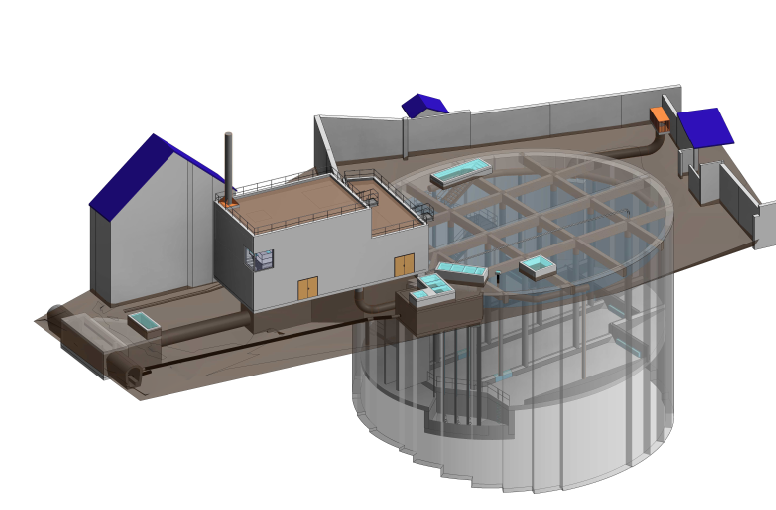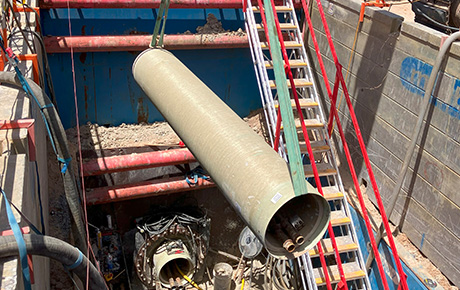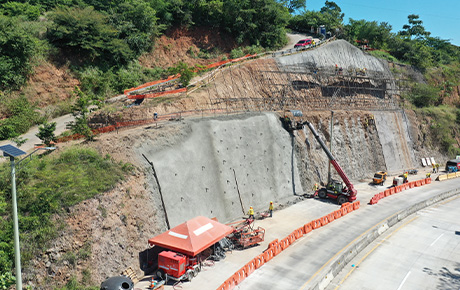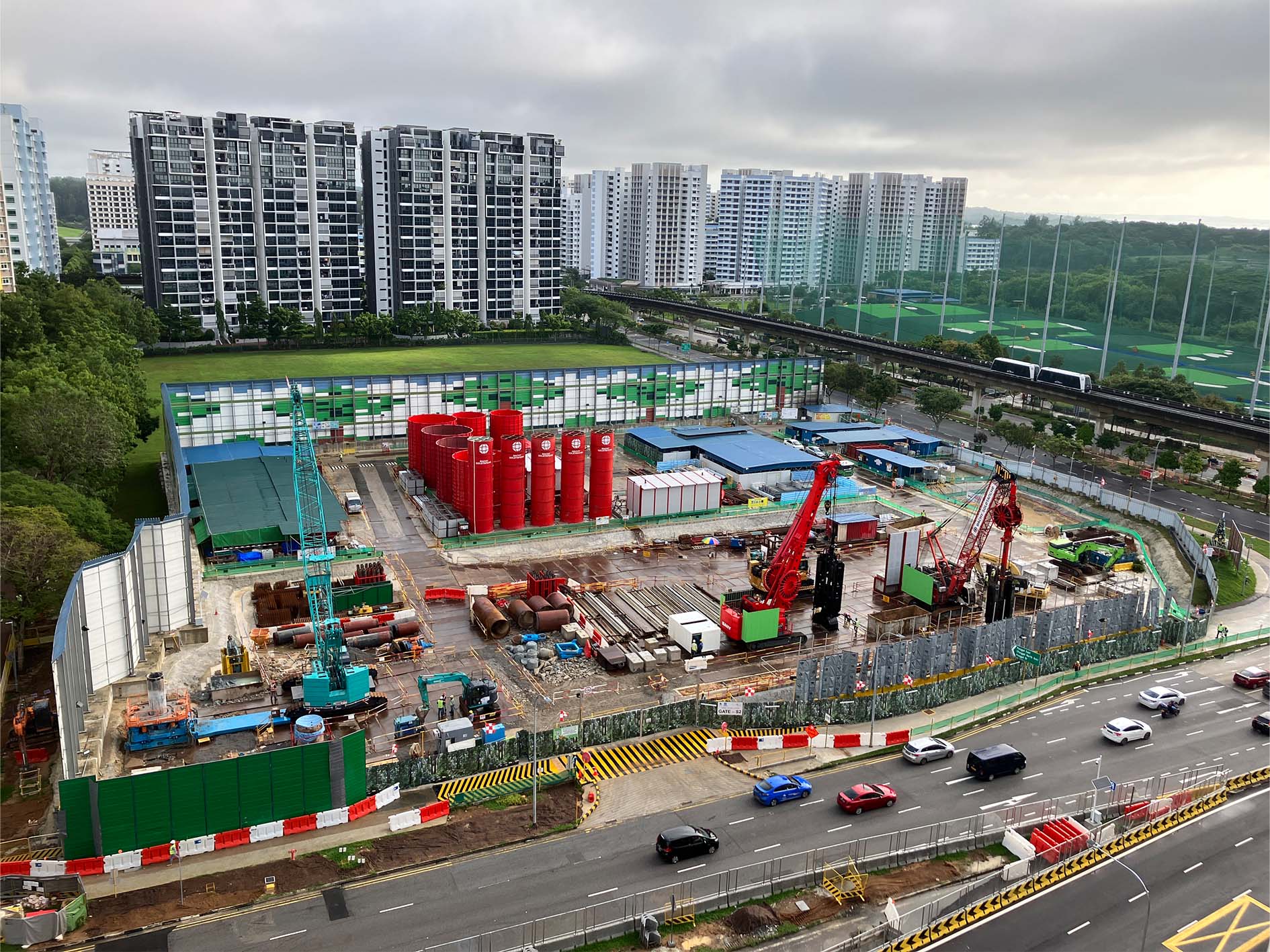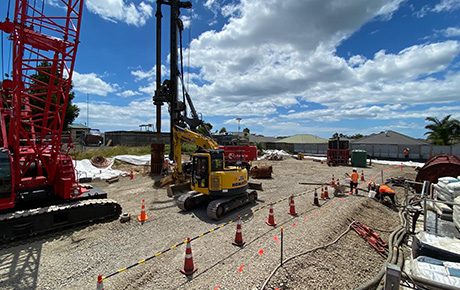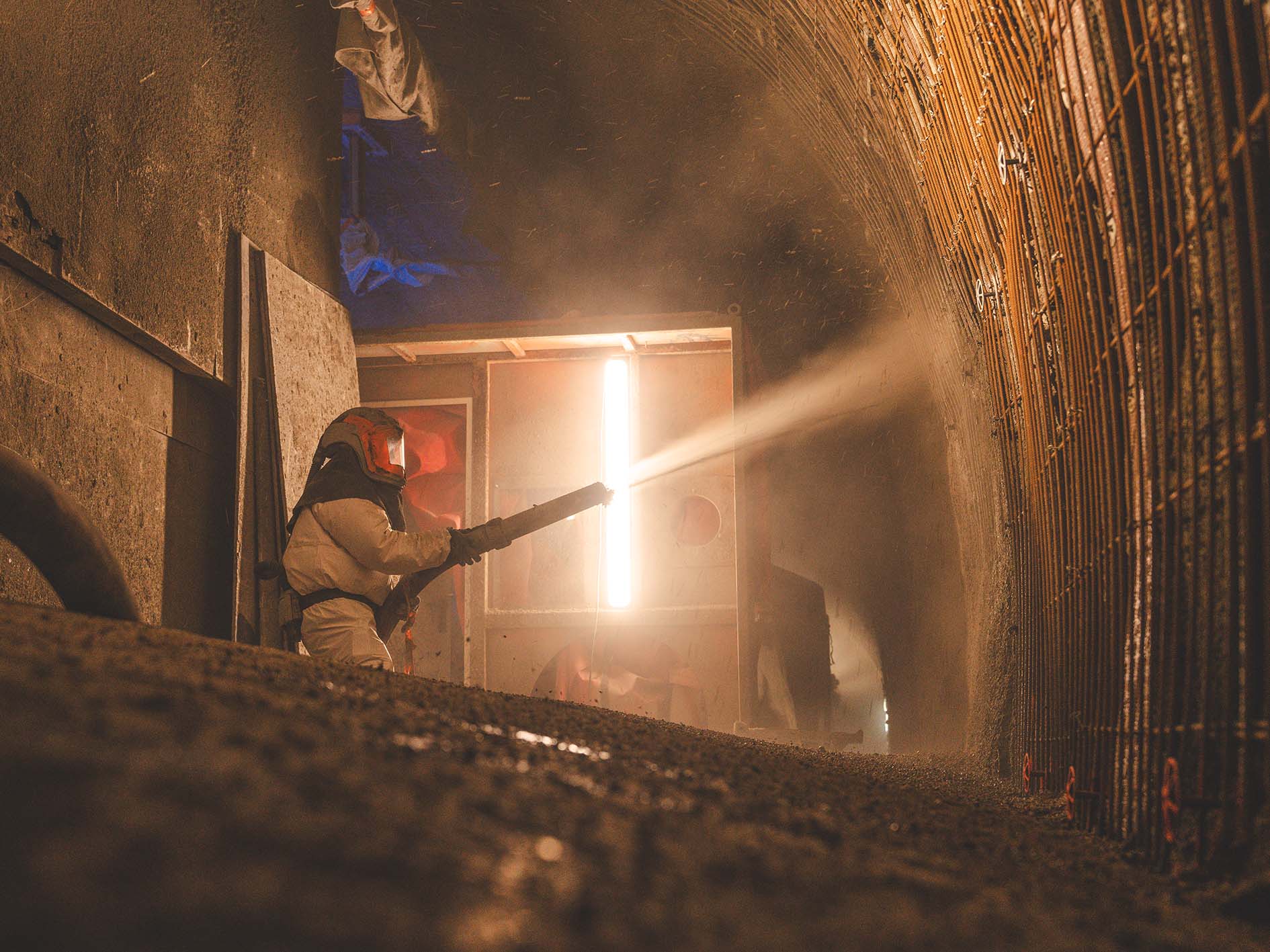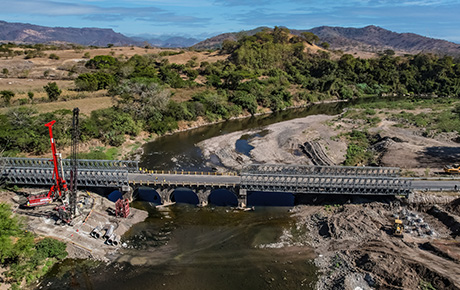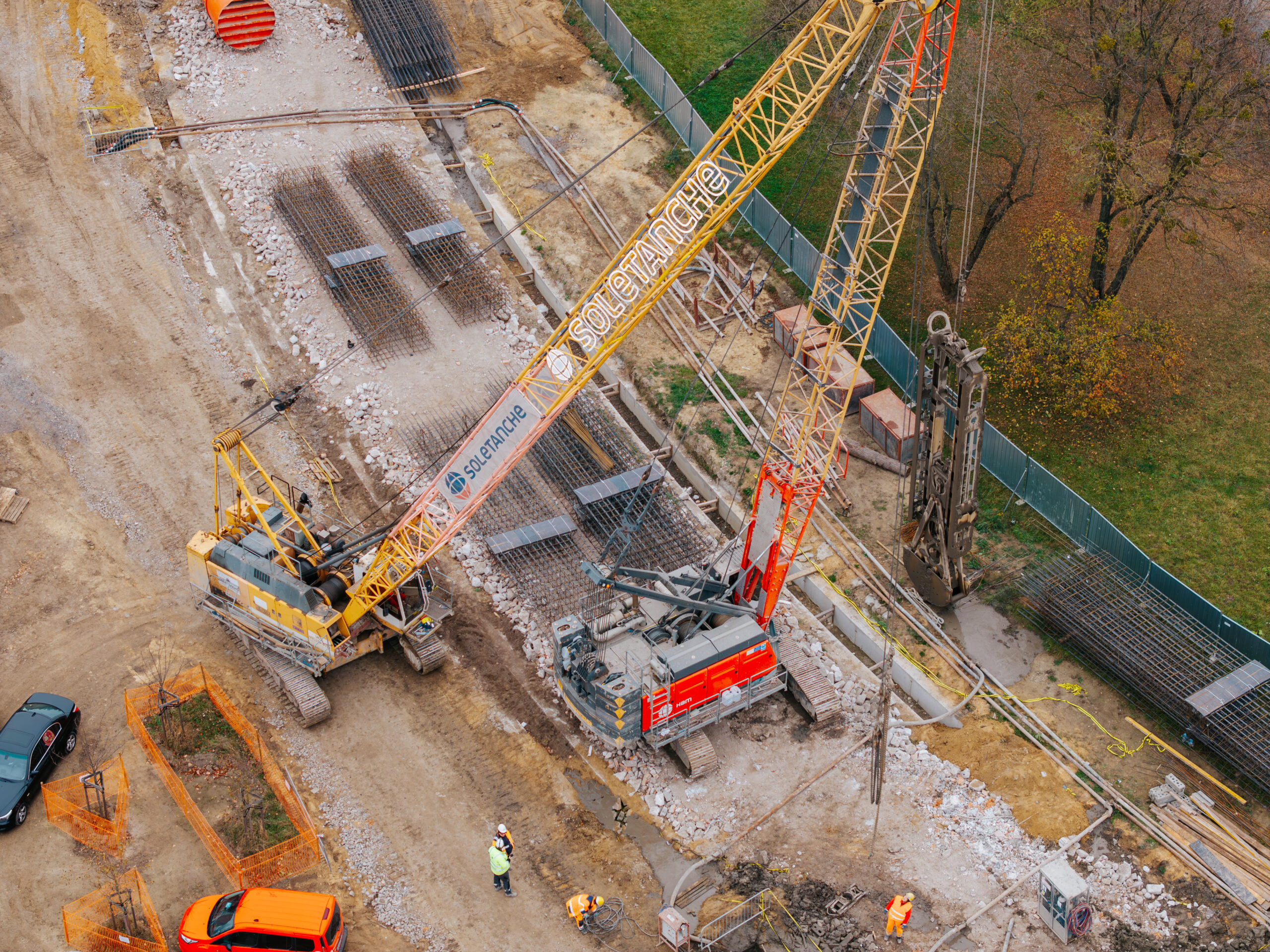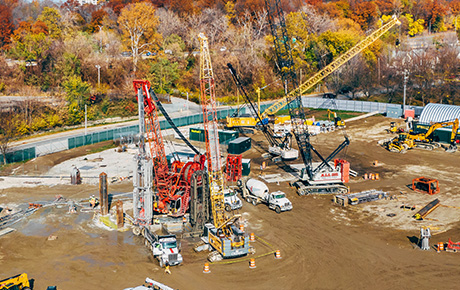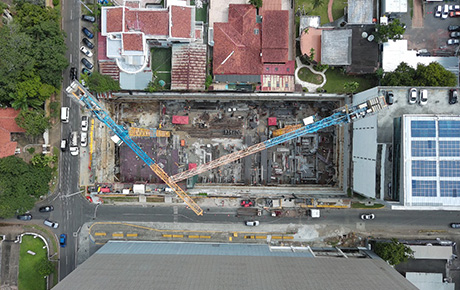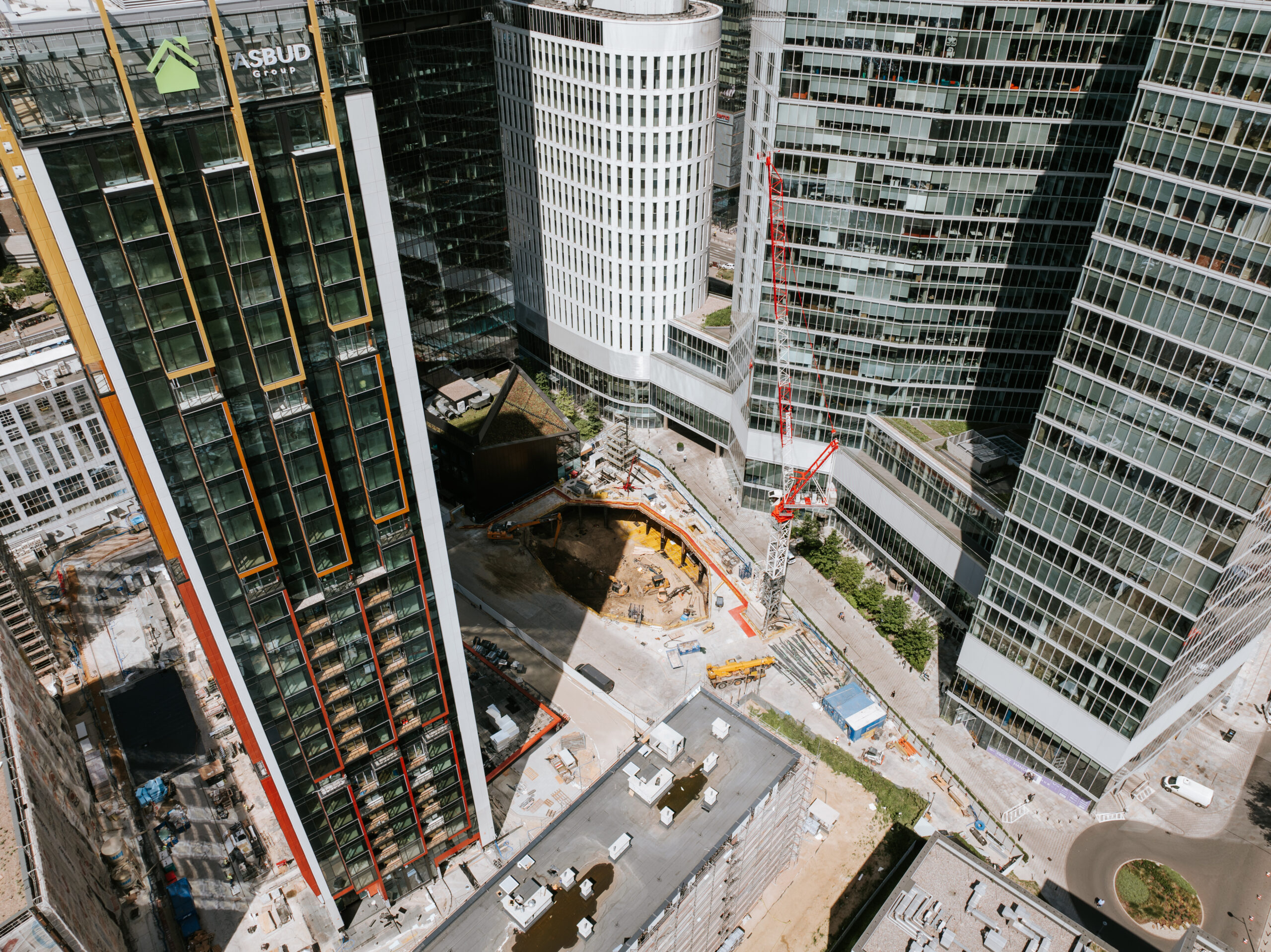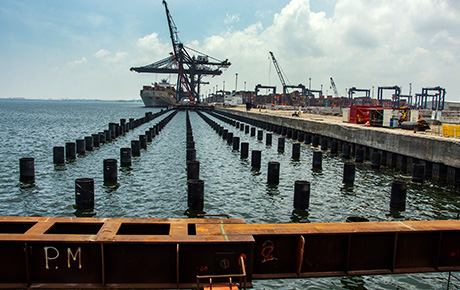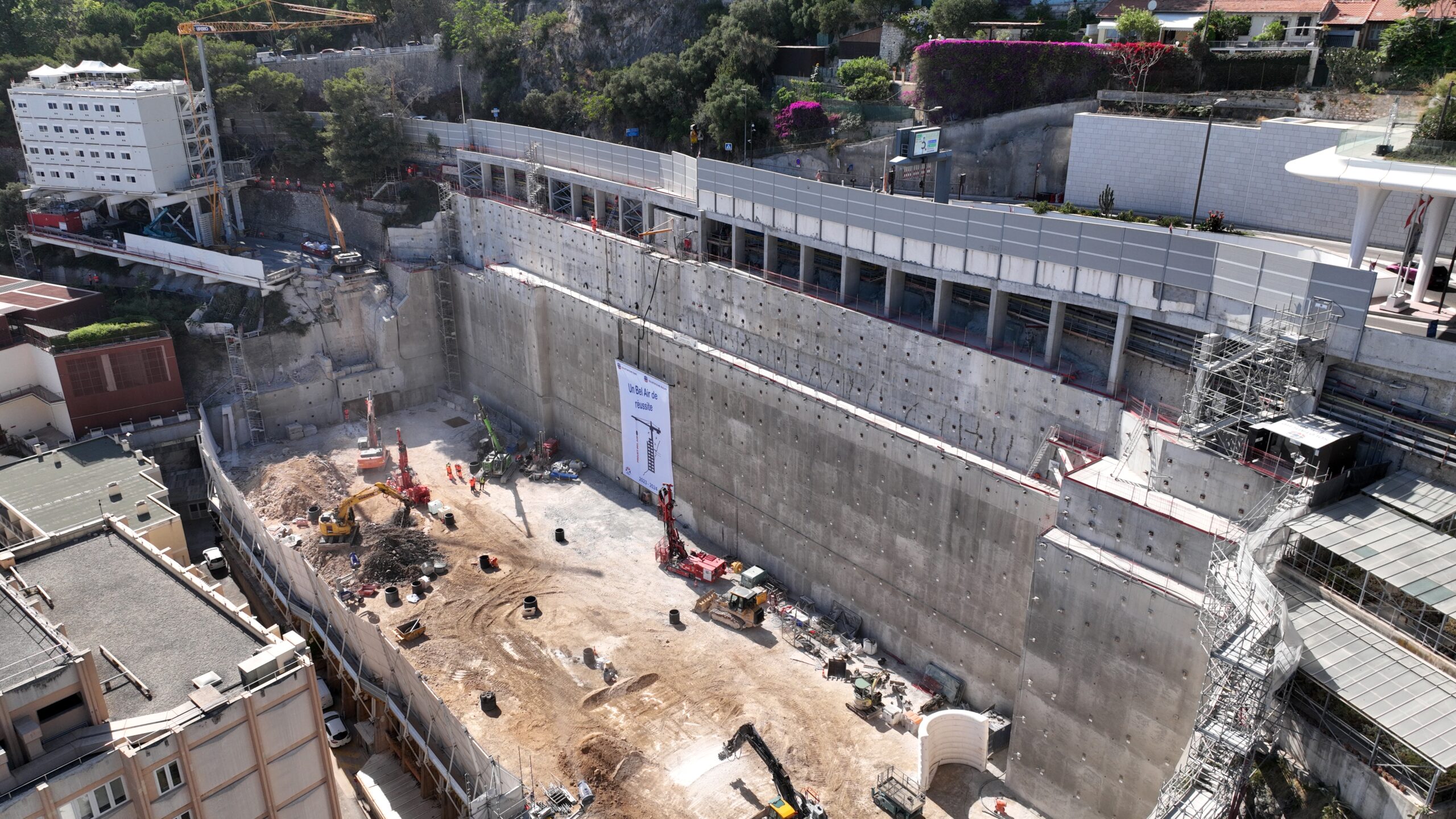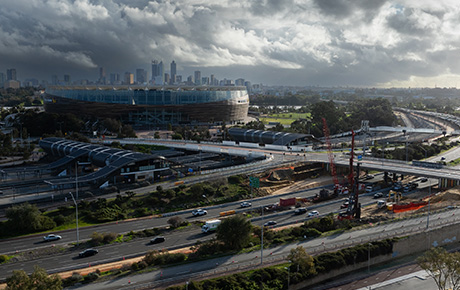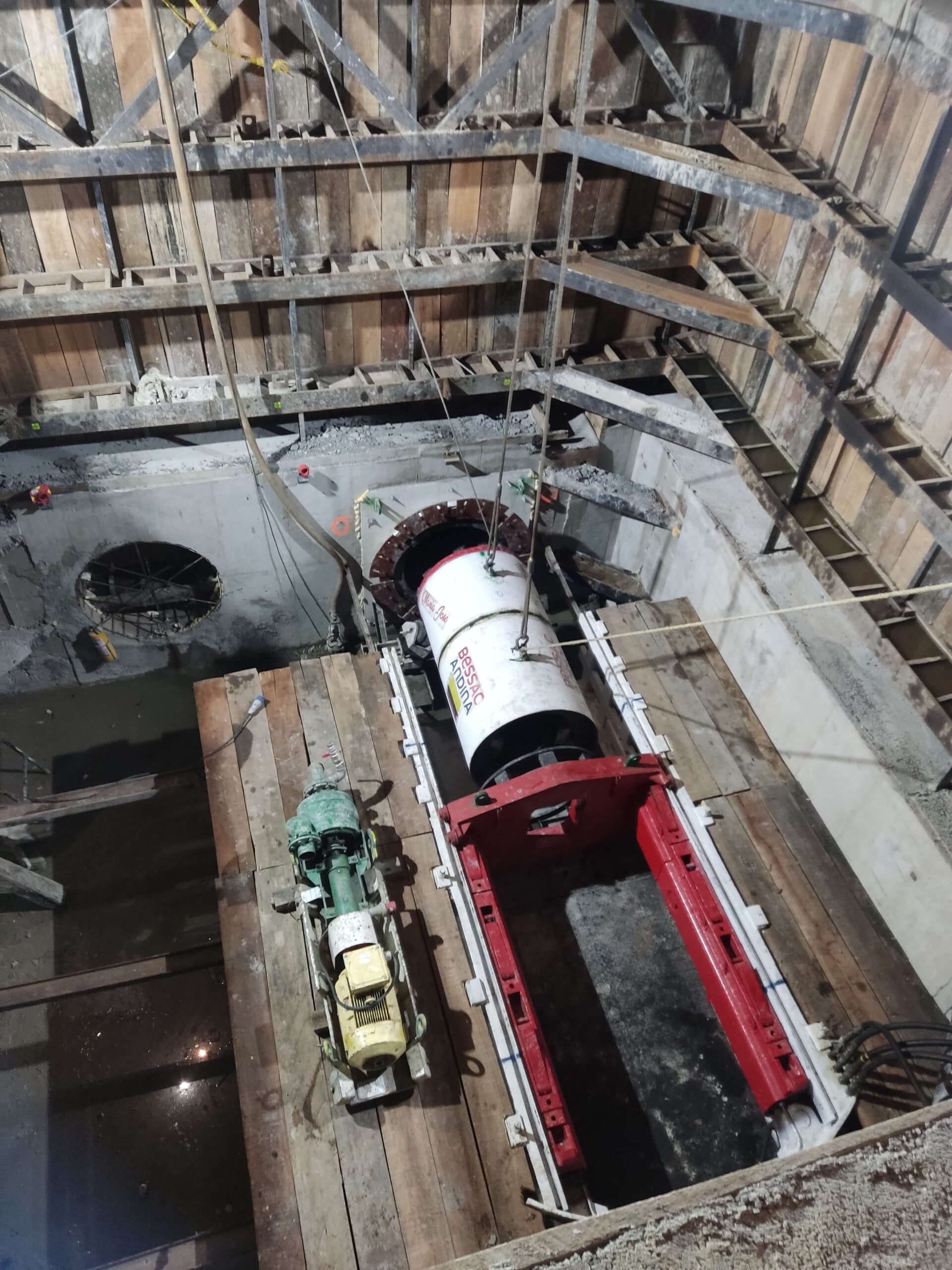23/10/2020
A look back at the complex CNIT project in La Défense – France
In 2016, as part of a consortium, Soletanche Bachy acquired works packages GC-DEF1 and GC-DEF2 for the RER E underground line (EOLE project). The work, which began in the summer of 2016, is part of the extension to RER line E between Haussmann-Saint-Lazare and Nanterre-La Folie.
It involves building a section of the RER E underground line (EOLE project, particularly including a 220m long underground station beneath the CNIT in La Défense.
The project is complex and very constricted given the highly urban environment of La Défense, with the vast majority of the work taking place underground:
- Works package GC DEF 1: La Défense station and adjacent tunnels
- Works package GC DEF 2: Cut-and-cover, western tunnel connecting structure and tunnel.
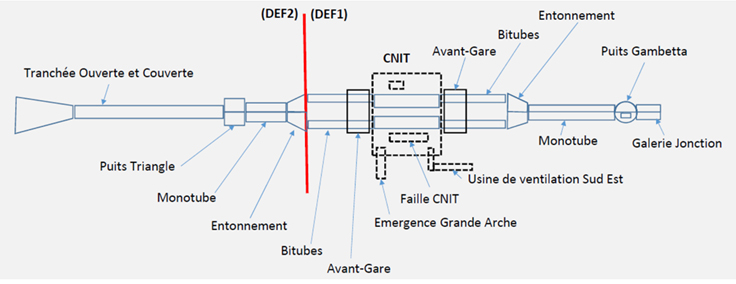
Works package GC DEF 1 was broken down into three main parts:
1. Adjacent tunnels and structures to the east of La Défense station
The Gambetta West construction shaft, 15m in diameter and 40m deep
Intersection vault between the Gambetta West and Gambetta East shafts (not included in the contract), 25m long
A two-track 95m tunnel with a 9.5m opening
A 76.5m tunnel connecting structure divided into two 10.5m chambers
Two single-track tunnels of 250m and 270m leading to La Défense station
2. La Défense station with its connections and tunnel openings
3. Adjacent tunnels to the west of La Défense station
Two single-track tunnels of 150m and 155m from La Défense station to the western tunnel connecting structure
The tunnel is excavated using a traditional method, passing under high-rise buildings, requiring preliminary reinforcement and underpinning by using micropiles, as well as compensation grouting.
The station beneath the CNIT is being constructed below the CNIT’s lowest existing parking level. To complete the earthworks, 2,000 micropiles need to be installed, provisionally by reinforcing the foundations of the CNIT car park, while the posts for the future station are constructed. The earthworks can then continue, sheltered by nailed wall or micro-Berlin-type walls, anchored as the earthworks progress (more than 8000m of drilling!). Widespread pumping makes it possible to work out of the water table.
Construction of the various tunnel openings between the surface and the CNIT station also requires retaining works such as micro-Berlin-type wall and pipe roofing, thereby increasing the number of work areas. Compensation grouting through the tunnel beneath the Exaltis building is also planned.
Certain retaining works to be carried out along existing railway lines must be carried out within very tight deadlines, with a complete suspension of traffic and organisation in three shifts, 24 hours a day, seven days a week.
The tunnelling work began at the end of 2017 from two points (the Gambetta shaft and Triangle shaft), to connect to the CNIT.
…..
Activity on the GC-DEF2 section began in April 2017 with works by Berlin-type wall works and two Hydrofraise® wall workshops. The diaphragm walls of the cut-and-cover were completed in early May 2018, while the civil engineering and earthworks were completed in 2019.
Today, beneath the CNIT, the phase 1 foundation works for the body of the station have been completed. Around 2000 micropiles were needed to underpin the existing building. The building was then placed on a transfer slab, itself supported on the pillars of the future station created using 60 hand dug shafts approximately 20m deep. The second phase began at the start of 2020, with a shutdown due to Covid-19 and a resumption of work on 11 May.
During the earthworks for the future “cathedral” station, 175 anchors and 660 steel bolts and glass fibre will be necessary to support its shell. All earthworks for the station are due to be completed by the end of 2020.
Work is under way on the T2 tunnel opening, which will serve as a junction between the La Défense Transilien station and the CNIT RER E station. This will take several years and include two temporary suspensions of traffic.
The special works mainly involve Berlin type-walls, micropiles, anchors and pipe roofing. During the summer of 2017, micropile work was carried out under the SNCF tracks during a temporary suspension of rail traffic. A second temporary suspension was imposed in summer 2020.
Work around the T2 tunnel opening is due to last until 2022.
On the Gambetta tunnel opening, which serve as a future pedestrian entrance to the station, special works teams are working in stages with the civil engineering teams.
Pipes roofing, piles, micropiles, bolts and anchors will be installed between now and 2021.
